Get a curated collection of design and architecture news in your inbox by signing up to our ICON Weekly newsletter
Taking its cue from nature, the vibrant design festival in northern Italy is a celebration of the local
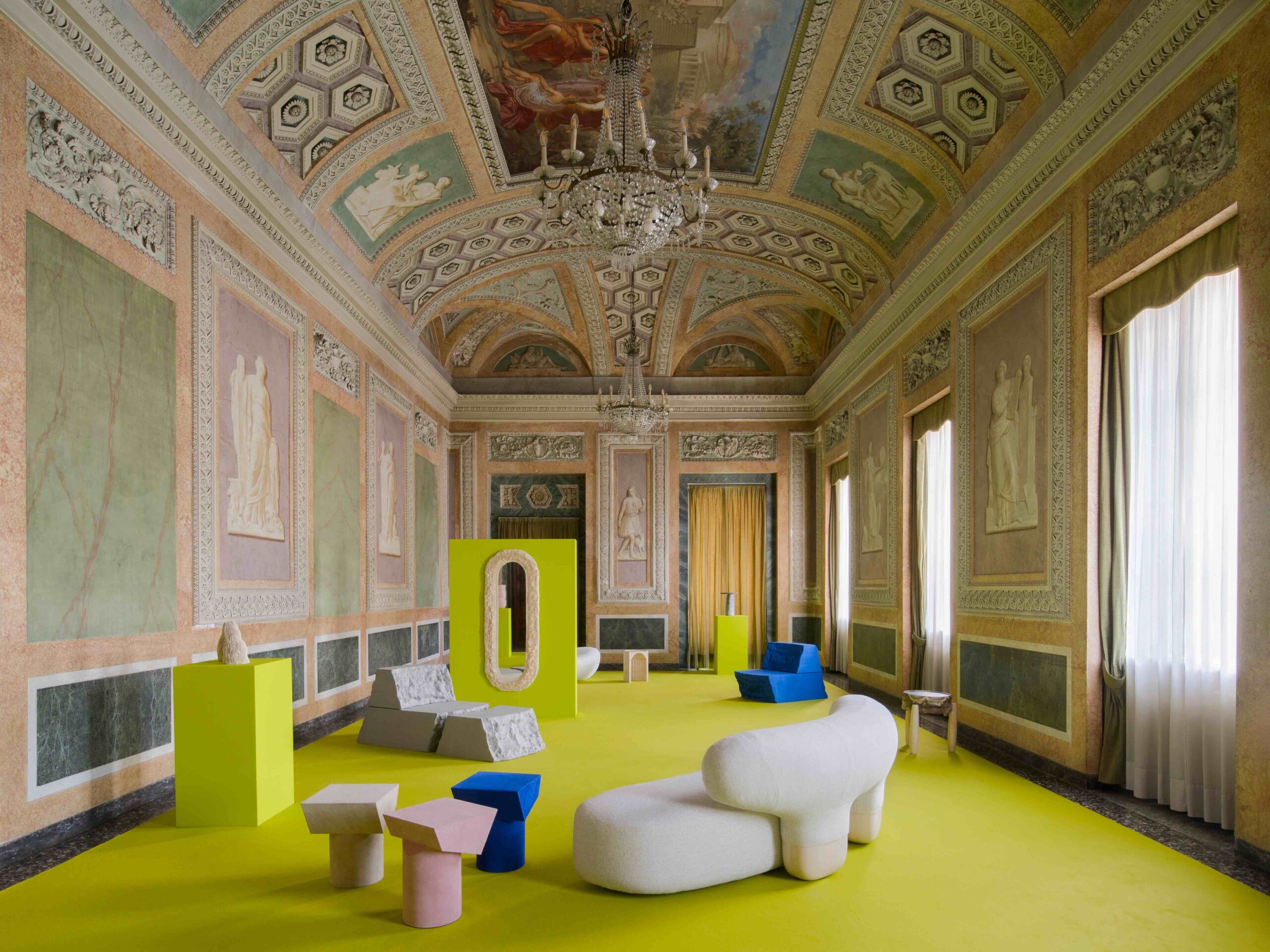 Photography by Marcello Maranzan featuring The Blue Flower exhibition at Villa Olmo
Photography by Marcello Maranzan featuring The Blue Flower exhibition at Villa Olmo
Words by Jessica-Christin Hametner
With panoramic lake views, cobble-stoned streets and peachy-hued villas, it’s easy to get lost in the beauty of Lake Como. While the area continues to embody old-world charms and glamour, an influx of young creatives is giving the northern Italian town an exciting new edge.
Among them is Lake Como Design Festival, established by non-profit organisation Wonderlake Como in 2018, which is returning from 16-24 September for its fifth themed edition: Naturalis Historia. This year, the festival looks to nature as its leitmotif, taking inspiration from the work of writer and naturalist Pliny the Elder, who was born in Como in late AD23. His Naturalis Historia collection, comprising 37 volumes, is the only body of his work to survive to the present day.
On a mission to establish a dialogue between history, design, architecture and art, the festival is paying tribute to Pliny and provides an opportunity to celebrate the bimillenary of his birth. From regenerative materials to thought-provoking exhibitions and the enduring appeal of nature as a subject for artists and designers, read on to discover the standout moments at this year’s Lake Como Design Festival.
1. The Other Animals at Palazzo del Broletto
 Photography by Ilaria Cuccagna featuring the designer’s Ossimoro piece
Photography by Ilaria Cuccagna featuring the designer’s Ossimoro piece
In keeping with Pliny’s voracious curiosity, Lorenzo Butti, art director of Lake Como Design Festival, along with Massimiliano Mondelli, president of the Pliniana Academy, co-curated The Other Animals, an exhibition at Palazzo del Broletto that brings to the stage Book VII of the Naturalis Historia in which the natural philosopher dedicates himself to Zoology. ‘Pliny described other animals with an empathy unique for the time,’ explains Mondelli. ‘He recognised the wonder of nature, and this exhibition really emphasises the interconnection of species,’ adds Mondelli.
The exhibition, divided into three segments (water, land and air), contains contemporary and ancient artefacts that portray ‘the playfulness of nature,’ says Mondelli. Selected works include Marie-José d’Aprile’s Primordial Whale (2021) alongside Ilaria Cuccagna’s Ossimoro (2017), a beautiful sculpture made from carrara marble and a single white feather. ‘This sculpture is part of a series that’s a communion of two different elements; in this case, the mineral world and animal world,’ shares Cuccagna. ‘The idea is that these two worlds are the same.’
Meanwhile, Olifant by Andreas Kowalewski (2018) for Caussa draws attention to the endangered African elephant. The brand donates a portion of every Olifant sale to German NGO Rettet die Elefanten Afrikas e.V., or Save Africa’s Elephants, which helps foster young, orphaned elephants and returns them back into the wild. Other notable pieces include a sketch of Phantasus Toy Kit, The Deer building instruction (1920-1924) by Franz Singer, Franz Scala and Friedl Dicker, whose works were rediscovered in the 1980s and are exhibited in Italy for the first time at Lake Como Design Festival.
2. Contemporary Design Selection at Villa Salazar
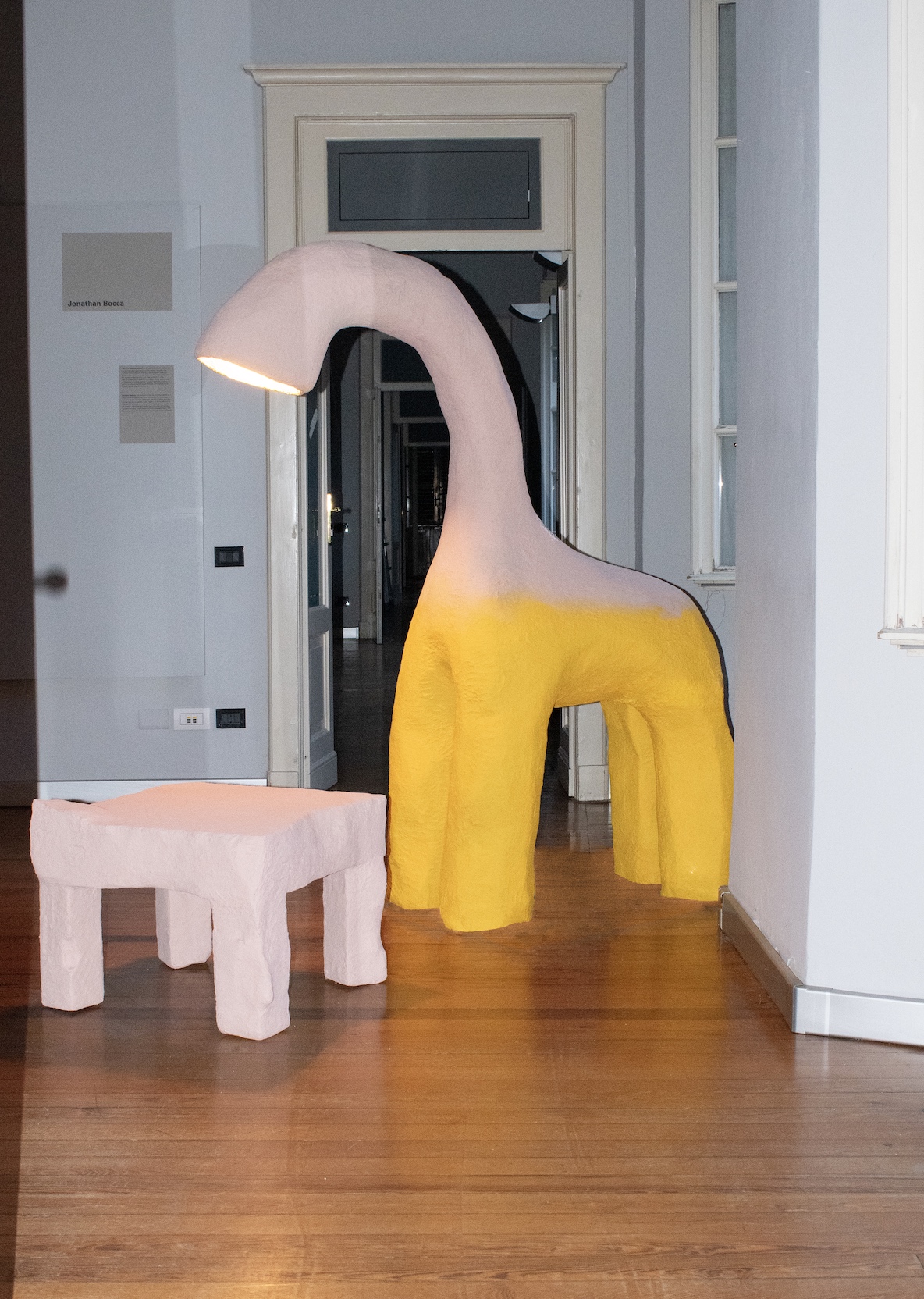 Photography courtesy of Jonathan Bocca featuring his Giraffa alta made from papier-mâché
Photography courtesy of Jonathan Bocca featuring his Giraffa alta made from papier-mâché
Connected to the theme of nature is the show’s Contemporary Design Selection. Excellently curated by Giovanna Massoni, she aims to highlight the works of independent designers, artists, gallery owners and publishers at Villa Salazar; the collectable objects will be on sale through an auction organised by online marketplace Catawiki.
Focusing on design as a driver for shared and interconnected discipline, and its ability to address climate change and the scarcity of natural resources, the exhibition showcases the ‘new design’ that explores regenerative materials, circularity and bioecology.
‘Most of the projects were selected because of a designer’s engagement or research of a critical topic. I was drawn to these particular works because of their new ways of creating a material,’ says Massoni. ‘I am very much interested in a new design that is providing another approach. I am looking for designers, craftspeople or makers who are developing processes with nature and not inspired by nature; it’s a collaboration.’
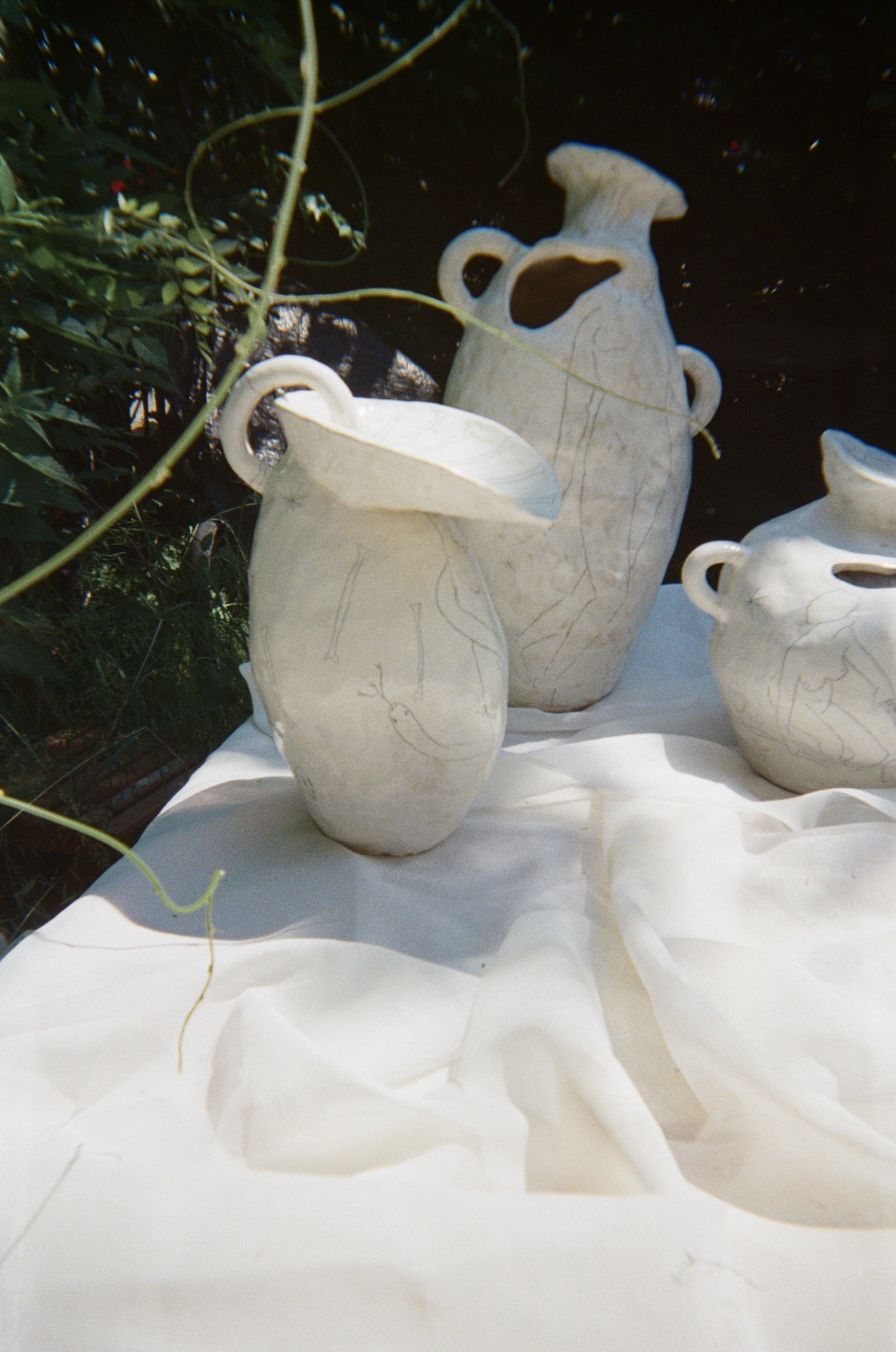 Photography by Francesco Carrasso – MAMT featuring CCONTINUA+MAMT’s delicate, handmade pieces
Photography by Francesco Carrasso – MAMT featuring CCONTINUA+MAMT’s delicate, handmade pieces
Among the participating designers are Rotterdam-based studio The New Raw – founded in 2015 by architects Panos Sakkas and Foteini Setaki – which crafts plastic waste with robots; sculptural designer Jonathan Bocca, whose works are made entirely of papier-mâché, and the Amsterdam-based, Italian duo CCONTINUA+MAMT, a collaboration between ceramist Chiara Caselli and visual artist Francesco Carrasso.
Antwerp-dwelling design studio Cédric Etienne is showing Still Room, an installation highlighting the possibilities and applications of cork. Understated but full of promise, cork is a natural, renewable and recyclable material that has the potential to revolutionise the way we build and design. To demonstrate this, Etienne used the organic material to create a collection of striking pieces, including a monk’s chair, a meditation cushion and a set of cork diffusers.
Others exhibiting include the works of Lodi-based artist Arazzi Alberone and architect Giovanna Latis, who experiment with iMesh technology, a recyclable, non-woven material made of high-performance fibres. Expressing the imagery of maritime landscapes throughout the different times of day, Latis combines i-Mesh technology with continuous ribbons of mineral fibres to create unique works of art. ‘The idea is to capture, as in a picture, this fleeting moment of the day,’ shares Latis.
3. Stories of Fabrics at San Pietro in Atrio
 Photography courtesy of Lake Como Design Festival featuring Arazzi Alberonero’s work using iMesh technology exhibited at Villa Salazar and San Pietro in Atrio
Photography courtesy of Lake Como Design Festival featuring Arazzi Alberonero’s work using iMesh technology exhibited at Villa Salazar and San Pietro in Atrio
The varied uses of the sustainable i-Mesh textile are also displayed at the festival’s Stories of Fabrics exhibition. Housed in San Pietro in Atrio, open to the public especially for the occasion, the building dates back to 1200 and was once connected to the nearby Basilica of San Fedele.
Inside, various artistic pieces that employ i-Mesh grace the walls of the space. Japanese architect and designer Tomo Ara is displaying his striking Cascata/Griglia Morbida, a loving tribute to Cristiano Toraldo di Francia of Superstudio, who passed away in July 2019. The tapestry is a reinterpretation of the geometries of Superstudio’s Histograms of Architecture, a catalogue of non-continuous three-dimensional diagrams.
Alongside these intricate displays, Lake Como Design Festival is also staging a selection of designs by other national and international creatives working with a strong spirit of research and experimentation within natural and vegetable manufacturing, from agriculture to weaving to the use of wool, cotton and silk (Lake Como’s silk production dates back to the 16th century).
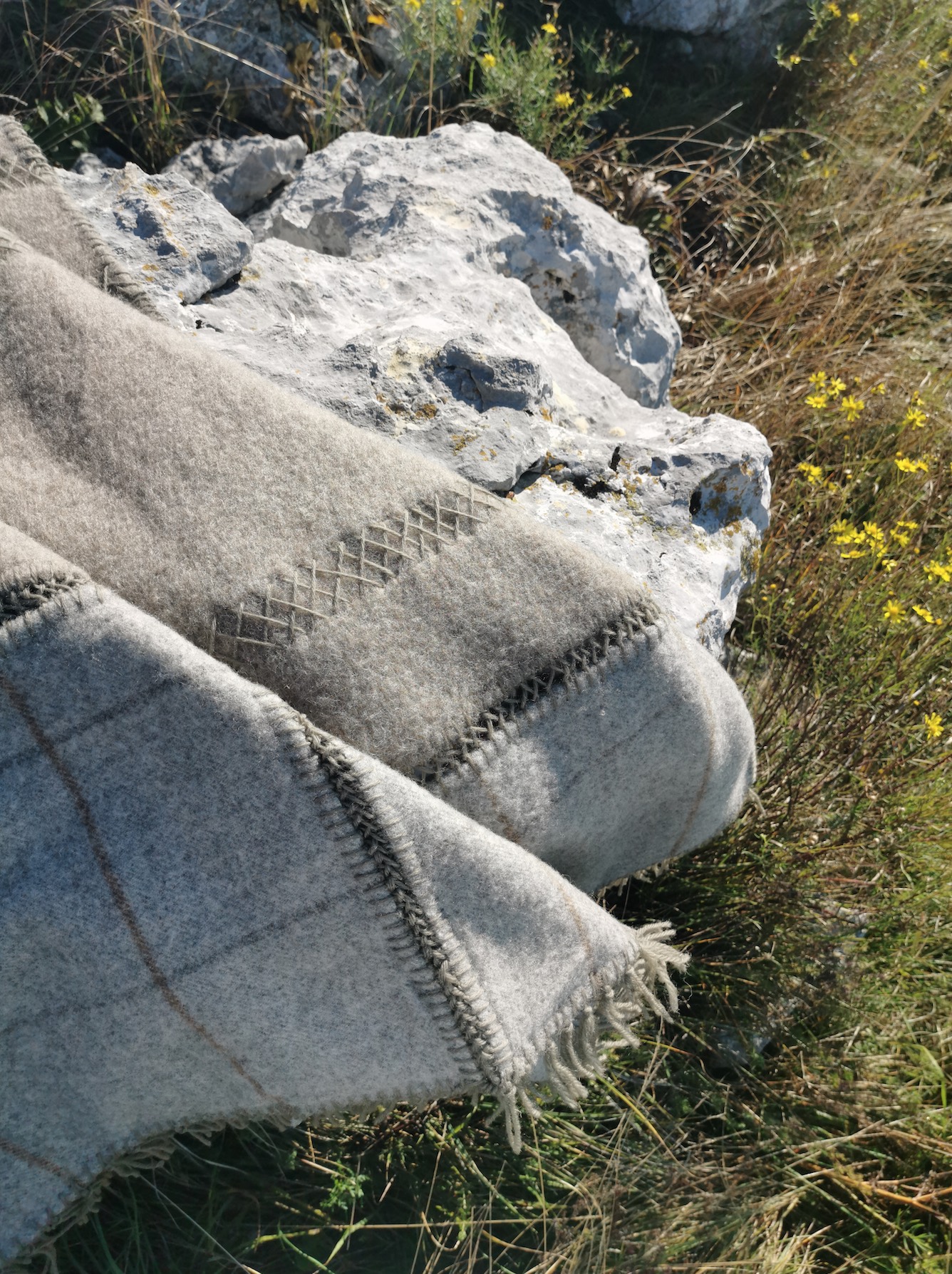 Photography courtesy of ruga.perissinotto featuring Tracce
Photography courtesy of ruga.perissinotto featuring Tracce
Among these is design studio ruga.perissinotto, which hopes to recover the historic wools of north-eastern Italy with its project Tracce. Giving life to the typical but oft-forgotten wool type, alpagota, the studio’s research began in Alpago, in the Province of Belluno, where sheep farming played a crucial role in the local economy until the first half of the 19th century.
The alpagota sheep, a triple-purpose breed that can provide quality meat, milk and wool, is an indigenous Italian breed and has long been at risk of extinction. To protect its legacy and carry on its name, ruga.perissinotto collaborated with centuries-old textile manufacturer Lanificio Paoletti to craft a beautiful collection of blankets using alpagota wool.
By not using dyes, the blankets maintain the original colours of beige and grey that are typical of the alpagota breed, while hand-embroidered, minimalist lines on the blankets reference the tessera, a stick used by breeders and cheesemakers in the past to count the quantity of milk.
4. Back to Nature at Villa Olmo
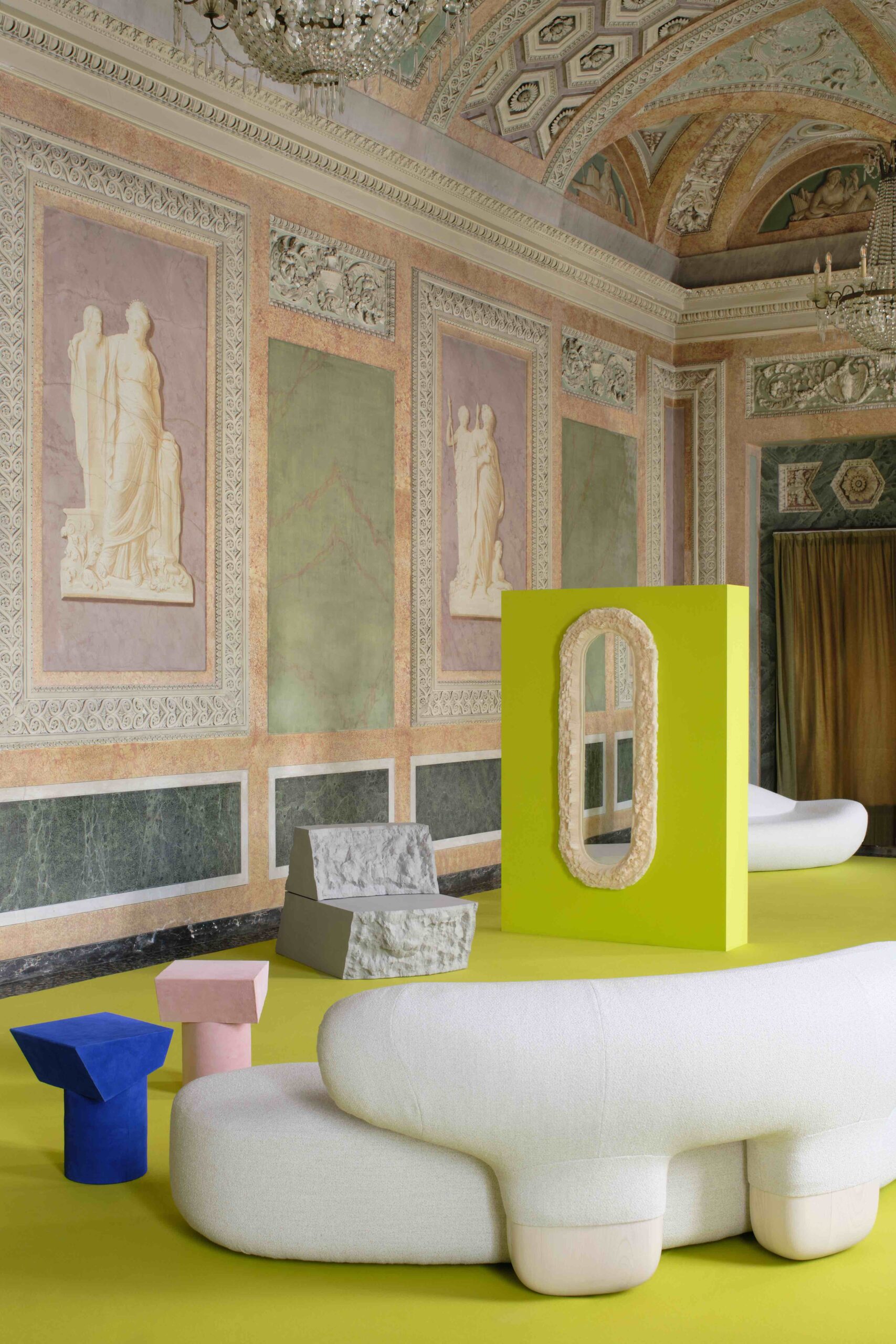 Photography by Marcello Maranzan featuring The Blue Flower exhibition at Villa Olmo (Oval Maxi by CARALARGA, Lapis Lazuli by Pablo Octavio, T Collection by Maximiliano Crovato, Alice Sofa by Joana Teixeira)
Photography by Marcello Maranzan featuring The Blue Flower exhibition at Villa Olmo (Oval Maxi by CARALARGA, Lapis Lazuli by Pablo Octavio, T Collection by Maximiliano Crovato, Alice Sofa by Joana Teixeira)
At the neoclassical Villa Olmo, one of Como’s popular historic landmarks, Back to Nature brings together international and local designers, focusing on contemporary design. Built in the 18th century, the magnificent villa overlooks the southwestern arm of Lake Como, from Borgovico to Villa d’Este in Cernobbio.
Upon stepping inside the ornately decorated space, the exhibition unfolds in various rooms, each covering different themes such as nature, local craftsmanship and symbolism in art. An evocative floral installation by American artist Kris Rhus takes over the entrance, which drops visitors directly into the artwork, and Galleria Rossana Orlandi is presenting its Lewit bed, realised with Draga & Aurel and Giuliano dell’Uva, complete with a custom wool and cashmere duvet by Somma1867.
An exploration of the natural world continues with The Blue Flower, a superbly curated exhibition of contemporary furniture and art inside a zingy-coloured space. Thoughtfully chosen by Movimiento, a research-based gallery sourcing the best new design from around the world, it features a digitally-printed mirror, Presence, by Italian design duo CELO.1; waterproof porcelain vases, A Walk in The Forest N°15, by Berlin-based artist Juliana Maurer and a selection of limited-edition bubbly chairs in a soft pink shade by Henry Baumann.
Blurring the boundaries between nature and art, the exhibition finds its inspiration in the works of Edmund Burke, one of the 18th century’s leading statesmen, political thinkers and writers. Studying the unexpected presence of beauty in nature, Burke noted that something can be vast, loud or rough in nature and still be considered beautiful. ‘Nature is made up mostly of shades of green,’ says Movimiento, ‘so the blue flower represents the rare, the unexpected and the unique.’
5. Between Art and Nature / Photographs from the collection of Carla Sozzani at Ursoline Convent San Carlo
 Photography courtesy of Karl Blossfeldt Archiv/Stiftung Ann und Jürgen Wilde, Pinakothek der Moderne, München
Photography courtesy of Karl Blossfeldt Archiv/Stiftung Ann und Jürgen Wilde, Pinakothek der Moderne, München
Offering visitors a look at nature through the lens of art, beauty and photography, Lake Como Design Festival teamed up with Fondazione Sozzani on Between Art and Nature, an exhibition curated by Maddalena Scarzella, where a selection of photographs illustrate the precious beauty of our planet. Realised in collaboration with Arte Applicata and Dedalo Orsoline San Carlo, it presents a rarely seen collection of 80 photographs selected from the permanent collection of the Fondazione Sozzani.
Housed inside the Ursuline Convent San Carlo, a 17th century building that opened its doors to the general public for the first time, the exhibition presents a new look at the collection. Focusing on nature and its ability to inspire, Scarzella aims to demonstrate how photography has portrayed nature and how, conversely, nature has inspired the most diverse photographic works.
‘Carla Sozzani started working in fashion in the 1970s. Since the beginning, she started communicating with images,’ shares Scarzella. ‘This collection focuses on women and beauty; it demonstrates Carla’s desire to share natural beauty with people as an editor of magazines and later as a gallerist.’
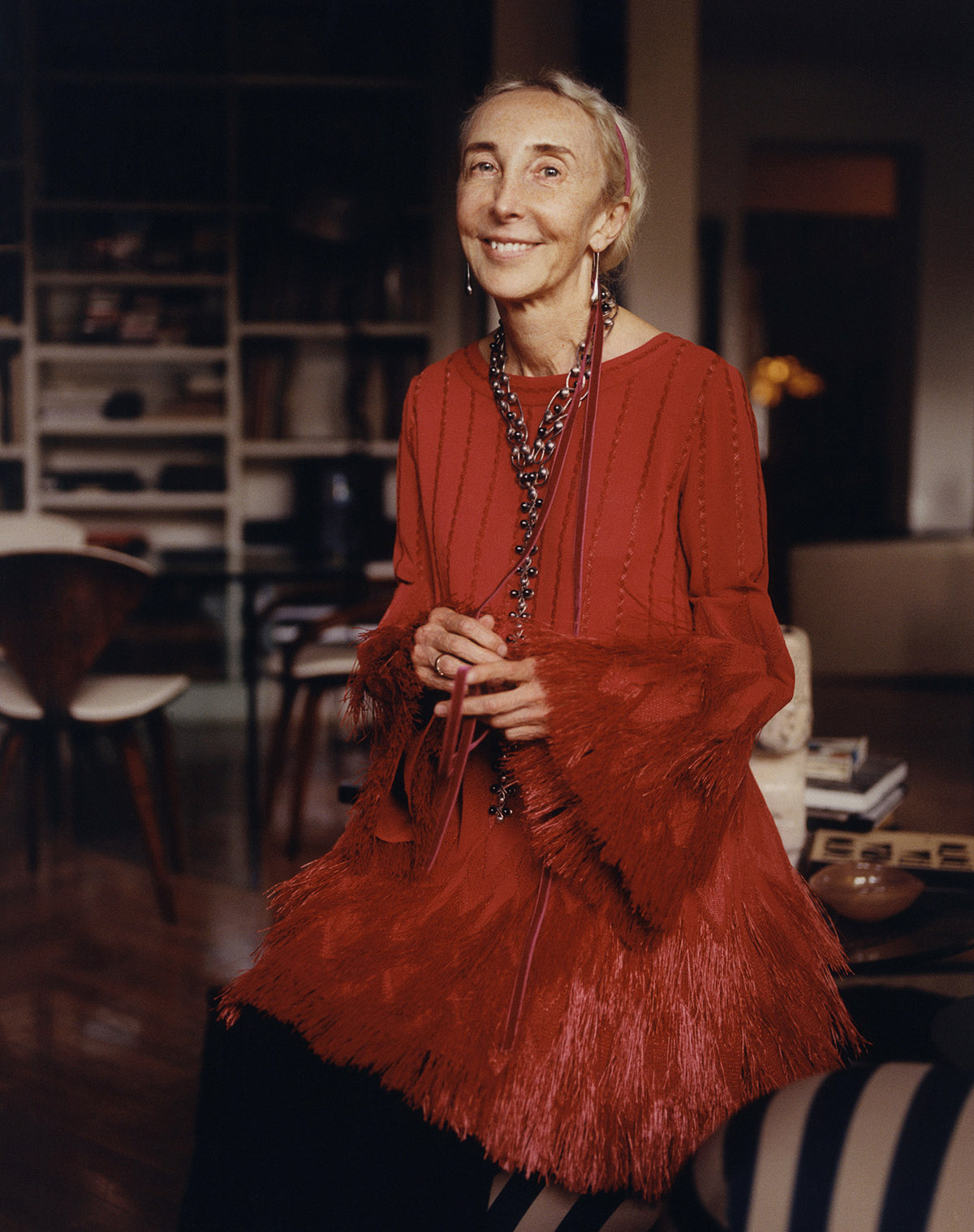 Photography by Paolo Zerbini featuring Carla Sozzani
Photography by Paolo Zerbini featuring Carla Sozzani
Supporting the careers of many emerging fashion photographers, Sozzani made a name for herself by publishing, and collecting, ground-breaking photography. ‘As she worked with many photographers throughout her career, she started collecting photography herself,’ explains Scarzella. ‘Whether it was a gift or for work, the collection grew organically over time in a simple way.’
Between Art and Nature starts from the iconic plant silhouettes of Karl Blossfeldt (1865-1932) and then moves through well-known and lesser-known names and works, such as the x-ray photographs of flowers created by radiologist Dr. Dain L. Tasker (1872-1964), juxtaposed with milestones of the genre like the impeccable still-lives of Japanese photographer Kenro Izu (1949) and New York’s School of Visual Arts graduate, Tom Baril (1952). ‘At the beginning of the century, artists focused on the architecture and structure of nature,’ shares Scarzella. ‘Many of them were inspired by these perfect forms.’
From the idyllic worlds of Annelies Štrba (1947), the exhibition moves on to the meticulous ethnographic documentation of Edward Sheriff Curtis (1868-1952) up to the landscapes suspended in time by Sarah Moon (1941). There are also photographs of flocks of crows, an allegory of pain by Masahisa Fukase (1934-2012), and studies on clouds as a metaphor for life by Alfred Stieglitz (1864-1946). Alongside these works, the exhibition features a selection of books Sozzani often used for research in her youth. ‘Carla loved to live this collection,’ adds Scarzella. ‘I think these works capture special moments and memories of her life.’

















